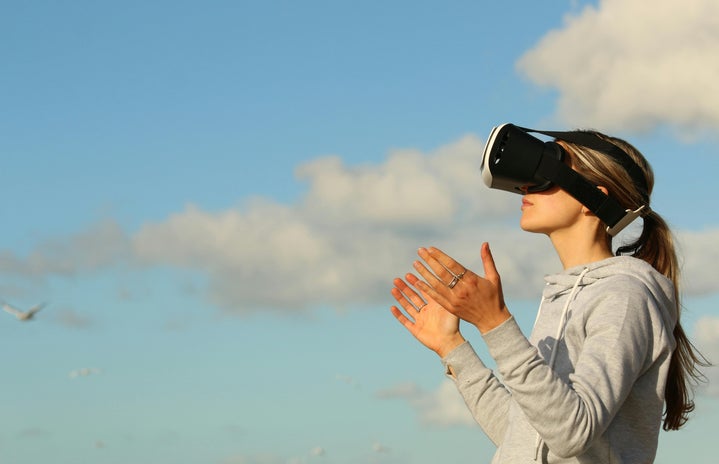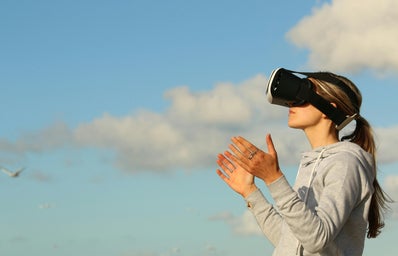“Welcome to the era of spatial computing”, is what it says when we enter the Apple website to see the famous augmented reality glasses.
The introduction of the Apple Vision Pro has grabbed the technology headlines with promises to revolutionize the way we interact with the digital world. The question that many are asking — and the one I seek to answer — is: Is the Apple Vision Pro truly a milestone in mixed reality or just another expensive novelty that will soon be forgotten?
Is criticism of the new an absolute truth or just fear of the modern?
It is indisputable that innovation often puts us in a position of discomfort. We naturally seek stability in our lives, a predilection that clashes head-on with the incessant pace of technological progress.
However, there is a fear of the new, of the unknown, which often leads us to criticize the new technologies that emerge baselessly. For example, the initial reception of the computer, the first cell phone, and now, the Apple Vision Pro itself: all had in common skepticism and resistance to its appearance.
How the dynamics of technological consumption work
The first cell phone was invented by Martin Cooper, a Motorola engineer, in 1973. The device called the Motorola DynaTAC 8000X, ushered in a new era of personal communication. Despite its considerable size and weight – it weighed around 1.1 kg and was 23 cm long – the DynaTAC 8000X was revolutionary for enabling telephone calls without the need for wires, something unimaginable for most people at the time.
The introduction of cell phones on the market, however, did not occur immediately after its invention. The DynaTAC 8000X only became commercially available in 1983, ten years after its conception, and its price was astronomical: around 3995 US dollars, which, adjusted for inflation, would be approximately 10 thousand dollars today. Due to its price, size, weight, and limited battery life (it offered around 30 minutes of talk time with 10 hours of recharge), the cell phone was seen more as a luxury or novelty than an essential communication tool.
Initially, the invention was, in fact, an object of judgment and skepticism. Many saw the device as an extravagant accessory intended exclusively for the rich and famous. Furthermore, there were doubts about the feasibility and necessity of communicating while on the move. The idea that people needed to be accessible anytime, anywhere was strange and, for some, worrying. It was feared that this could lead to an increase in stress and a decrease in privacy.
However, as technology advanced, mobile phones became smaller, lighter, more affordable, and had longer-lasting batteries. The introduction of digital communication networks in the 90s significantly improved the quality of calls and increased spectrum efficiency, allowing a greater number of simultaneous users. Gradually, the public perception of cell phones changed. They went from a status symbol to an essential tool in people’s daily lives.
In retrospect, the emergence of the wireless telephone radically transformed the way we communicate, work, and socialize. Initial skepticism gave way to acceptance and eventually widespread dependence on this technology. Today, it is difficult to imagine life without cell phones, which have evolved from simple devices for making calls to multifunctional smartphones, capable of accessing the internet, sending instant messages, taking photos, as well as a multitude of other functions.
Thus, as with many innovations, the cell phone’s path from its inception to becoming a ubiquitous and indispensable tool was marked by challenges, trials, and constant evolution, reflecting both technological changes and changes in social attitudes and behaviors.
Since the launch of the new iPhones
Interestingly, the cycle of technological adoption often repeats itself: initial criticism followed by almost feverish acceptance. The history of Apple launches perfectly illustrates this cycle. Each new iPhone is initially greeted with a chorus of criticism, many focused on the devices’ affordability. Countless voices are raised, criticizing the high prices of the most recent releases.
However, a curious pattern is observed: as soon as a newer model is launched and the prices of previous models fall, a frantic race for the “outdated” product begins. This behavior reveals a complexity in our relationships with technology. On the one hand, there is criticism of the new for representing a challenge to our search for stability; on the other, the desire to belong and be up to date in the technological field drives us to eventually embrace these same innovations. The truth is that, despite our initial fear of new things, technological evolution continues to play a vital role in our adaptation and growth in an ever-changing world.
We must recognize the innovative aspects of the Apple Vision Pro. The company claims that this device ushers in a new era of human-machine interaction, offering an unparalleled mixed reality experience. The glasses promise to not only immerse users in high-quality virtual and augmented experiences but also facilitate more natural and intuitive interaction with the digital environment, whether through gestures, voice, or even facial expressions. Such characteristics suggest advanced integration with the user’s reality, enhancing uses in education, remote work, and design.
According to Apple’s website:
“With Apple Vision Pro, Complete HeartX will help prepare medical students for clinical practice with hyper-realistic 3D models and animations that will allow them to not only visualize and understand pathologies such as ventricular fibrillation but also apply their knowledge in patient care”
And this is just one of the many practicalities that the product will bring within the field of education, among others.
How critical are Apple’s competing glasses?
As Apple Vision Pro marks its triumphant entry into the mixed reality market, it’s impossible not to take a careful look at the competitive landscape that surrounds it. Intriguingly, while the launch of this innovative Apple product draws both applause and sharp criticism, mostly directed at its price and positioning as a niche product, competitors appear to navigate these turbulent waters with less public scrutiny. This discrepancy in the treatment of Apple products compared to those of its rivals arouses curiosity.
Although competitors have introduced their versions of mixed reality devices, often with comparable features and capabilities, they have not faced the same degree of critical analysis. This phenomenon raises pertinent questions about market expectations, brand loyalty, and the marketing strategies used by companies to position their products in the minds of consumers.
However, it is imperative to consider the cost barrier. Apple products are notoriously expensive, and this is no exception. This inevitably raises questions about its accessibility and potential to achieve mass adoption.
Do the benefits justify the high price, or is this a gadget intended only for technology enthusiasts with the resources for such an investment? History has shown us that, for a technology to transform society, it needs to be accessible to a broad audience, something that high costs can prevent.
Critics are quick to point to price as a significant barrier to mass adoption. However, as seen in previous technology launches, innovation tends to start in the premium segment before becoming more affordable. It’s a matter of time before the technologies used in Apple Vision Pro become standard, benefiting a much wider range of users.
Furthermore, the potential impact of it in the workplace and across various industries must be considered. From medicine to design to education, the applications of mixed reality are vast and promise to make countless activities more efficient, interactive, and impactful. This is not a mere device for consuming content; is a tool that can revolutionize the way we create, collaborate, and learn.
Furthermore, the issue of privacy deserves attention. Devices that constantly capture and interpret our interactions can raise significant concerns about how data is collected, stored, and used. Apple has a relatively positive track record in terms of user privacy, but the potentially intrusive nature of the Apple Vision Pro requires critical analysis and robust data security and privacy guarantees.
Ultimately, the long-term success of Apple Vision Pro will likely depend on the quality and variety of apps and experiences that are developed for it. A technology, no matter how revolutionary, struggles to maintain relevance without a rich ecosystem of content that continues to engage and surprise users. So Apple and third-party developers face the challenge of ensuring the device is more than a high-tech gimmick, but a platform for continuous innovation and meaningful immersive experiences.
In conclusion, Apple Vision Pro represents a leap into the future of mixed reality. However, while we applaud technological innovations, we must remain vigilant to issues of cost, privacy, and long-term sustainability. It will be fascinating to watch how this device evolves and, more importantly, how it influences the interaction between humans and the digital world. The true measure of your success will not just be in your technical prowess but in your ability to integrate affordably and meaningfully into people’s everyday lives.
—————————————
The article above was edited by Julia Tortoriello.
Like this type of content? Check out Her Campus Casper Libero for more.

